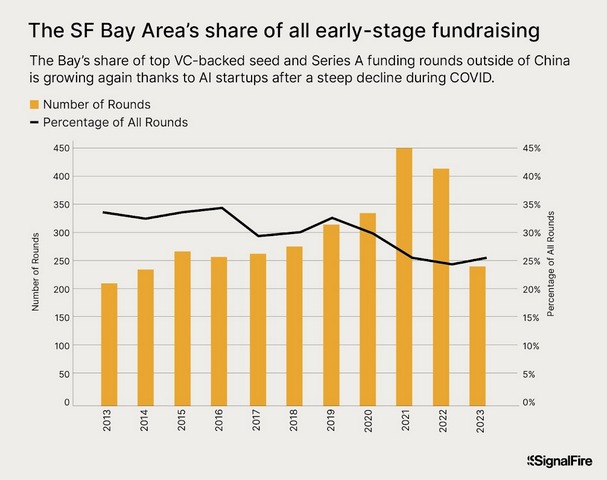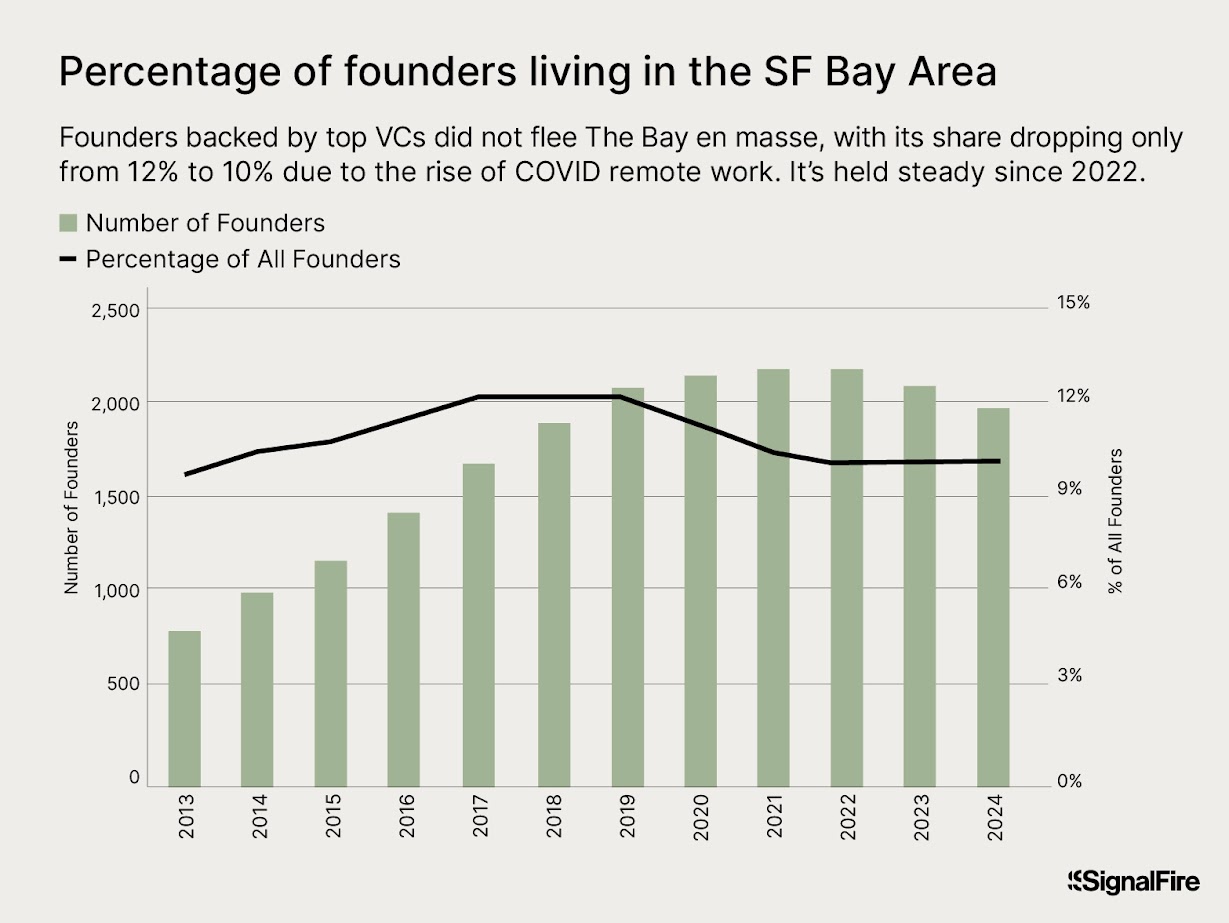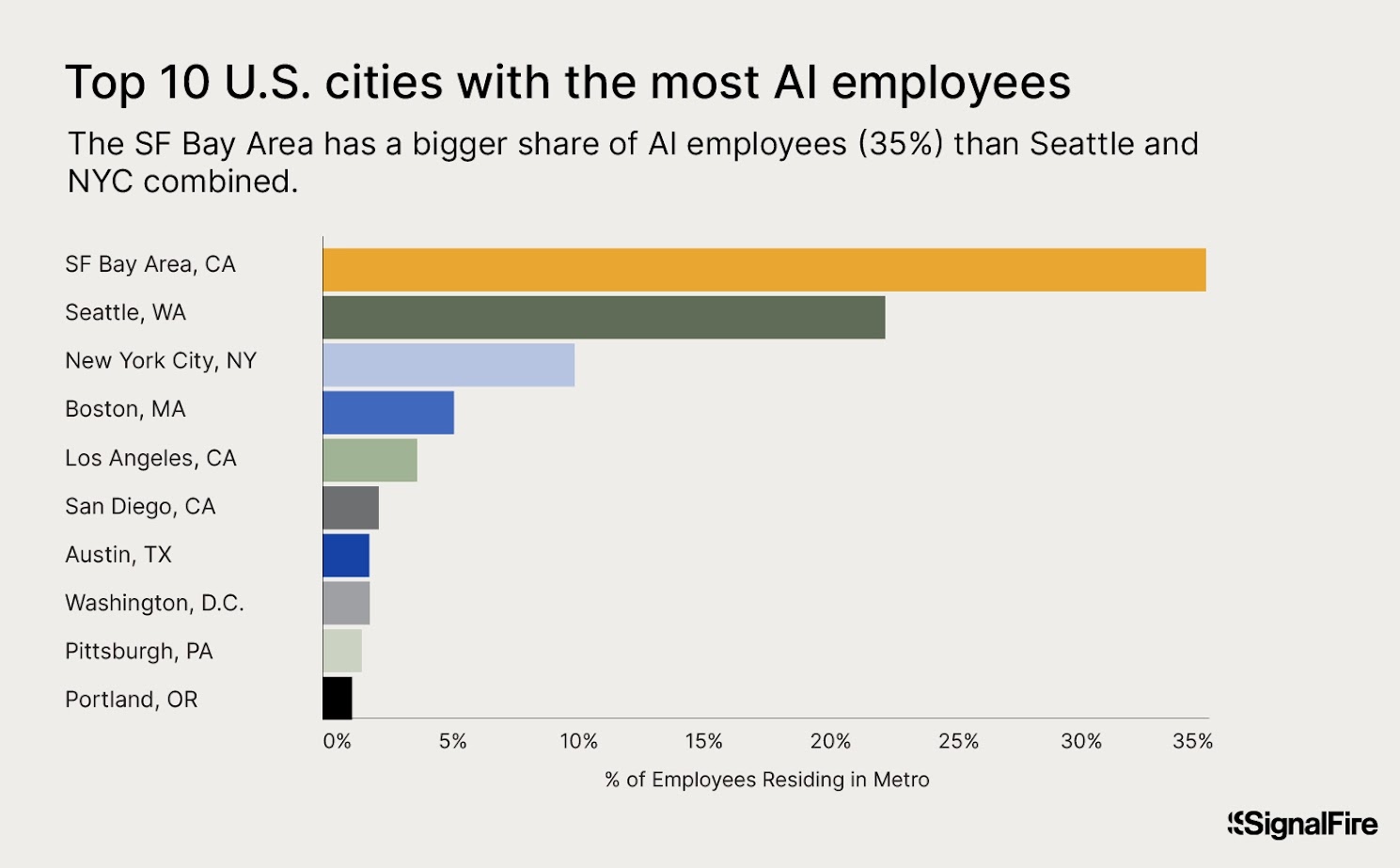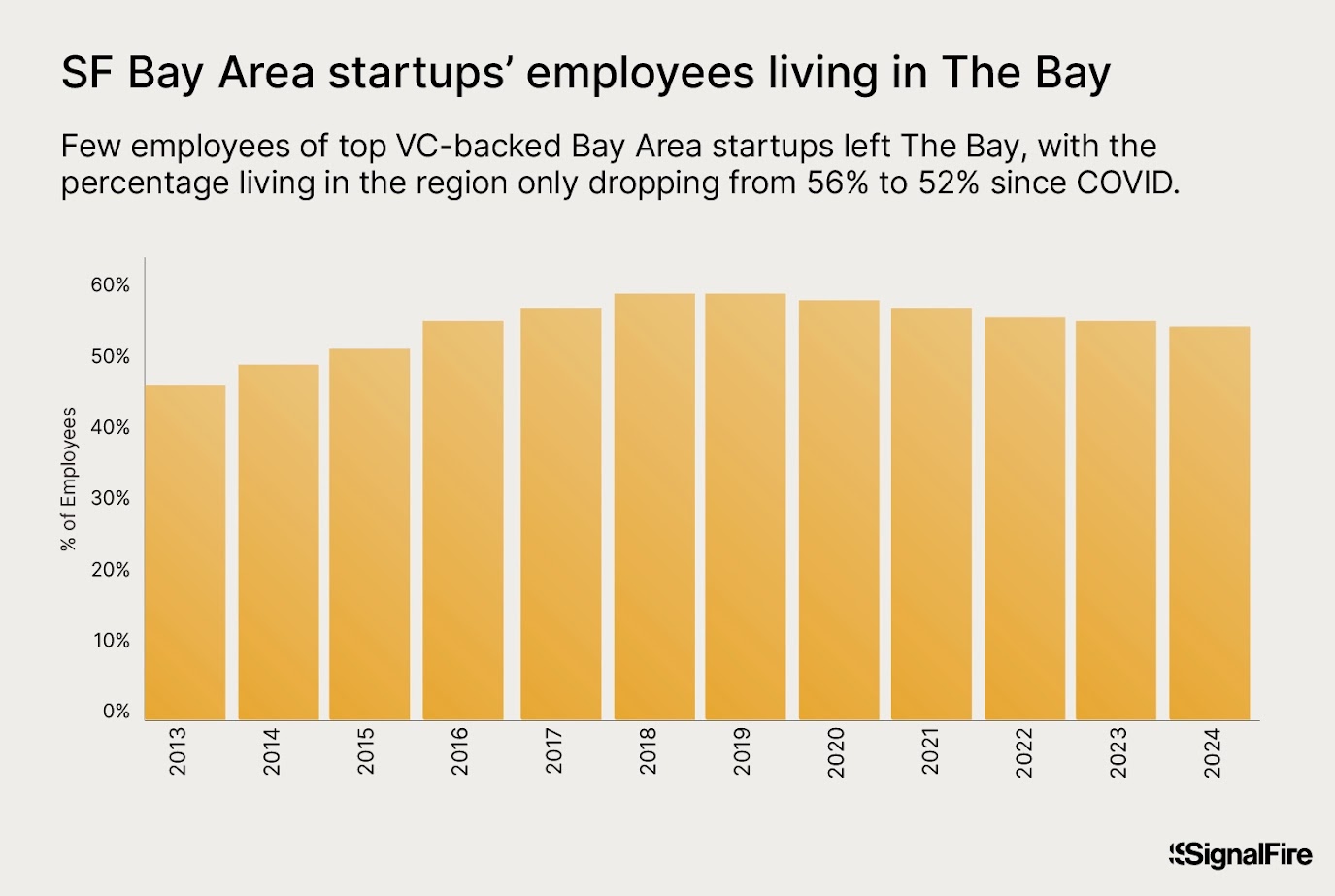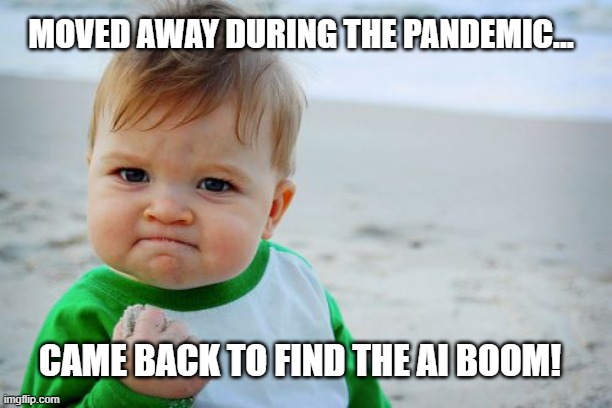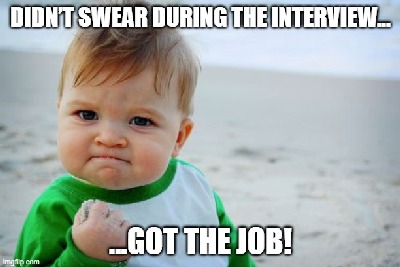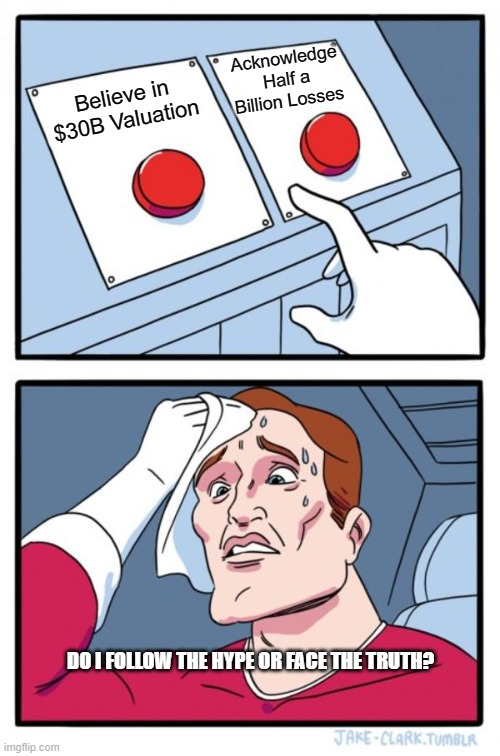The narrative surrounding the decline of San Francisco’s tech and startup scene has been circulating for a while. It’s a story that many have heard, especially as people moved to Austin, Miami, and other cities. But, looking at the data, it’s clear that SF’s tech ecosystem isn’t just alive—it’s thriving, particularly with a new wave of AI startups.
SF’s Comeback Story
As someone who lives in the heart of San Francisco, I’ve seen firsthand how the city’s startup ecosystem has shifted. Like many others, I initially wondered if SF was losing its grip on being the go-to place for tech innovation, especially with companies leaving or downsizing their presence. But the data tells a different story—SF’s share of early-stage startup funding is not only holding strong but actually bouncing back.
Looking at the chart, it’s obvious that the number of rounds of VC-backed seed and Series A funding took a hit around 2020 during COVID, but it’s back on the rise. AI startups, in particular, have played a significant role in this resurgence.
In 2023, more than 26% of all Seed and Series A rounds are flowing into Bay Area companies, which is a larger share than any other region in the U.S. It’s also worth noting that AI-focused companies are driving this growth, taking a whopping 38% of these funding rounds. The AI boom is real, and SF is at the epicenter of this gold rush.
Why SF Never Truly Left
Despite some of the doom and gloom, tech never really left San Francisco. In fact, about 49% of all big tech engineers and 27% of startup engineers are still here in the Bay Area. These numbers are huge when compared to other U.S. cities. For example, Seattle, which ranks second, has just a fraction of these numbers.
But the real question is, why is SF bouncing back so strongly, especially with AI? The answer lies in the talent and venture capital pools that this region continues to offer. Sure, the cost of living is high, and yes, there are still concerns about cleanliness and safety in some areas. But when it comes to innovation, particularly in AI and machine learning, there’s no better place to be.
AI is the Game Changer
The recent surge in AI startups is leading SF’s comeback in the startup ecosystem. According to SignalFire’s research, over half of all startups in Y Combinator’s Winter 2023 batch were based in the Bay Area. That’s the highest percentage we’ve seen since 2014, and it’s largely due to AI companies.
This growth in AI innovation has brought new energy to SF. With the rising demand for AI expertise, San Francisco continues to be a magnet for top tech talent. And as more funding rounds pour in, I expect this trend to continue for years to come.
Looking Ahead
From what I can see, the future of SF’s startup scene looks incredibly bright. There’s a renewed sense of optimism as the city reclaims its place as the heart of tech innovation, especially in AI. Yes, there are challenges that remain, but SF’s culture of creativity, tech, and innovation is what makes it so unique.
It’s clear that San Francisco isn’t just surviving—it’s thriving. The city’s ability to adapt and lead the way in emerging technologies like AI is exactly what will keep it on top of the startup world. So, for anyone who thought SF was over, the data—and the streets of San Francisco—tell a very different story.
Conclusion
While it’s true that other cities are making their mark in the startup world, there’s no denying that San Francisco continues to dominate when it comes to early-stage fundraising and tech talent. With AI leading the charge, I have no doubt that SF will remain a central hub for innovation and entrepreneurship for years to come.
Read the article: “Why the SF Bay Area Remains the Unchallenged Leader in AI Talent”
